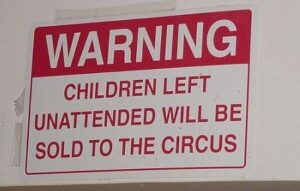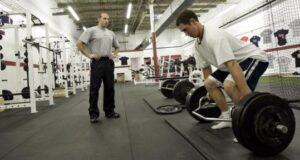
Youth Strength and Conditioning Programs: Systems, Not Just Sets and Reps
Back in November of 2010, a good buddy of mine who is a very accomplished college strength coach came up to Boston for a seminar we were hosting at Cressey Sports Performance. The seminar was on a Sunday, but he actually flew up Friday night so that he could observe on Saturday while we trained our clients – which was a nice blend of high school, college, and professional athletes, plus our adult clientele. All told, at the time, I’d say that high school athletes were 70% of our clientele.
That Tuesday morning, I woke up to this email from him:
“I just wanted to say thanks for everything. I had a great time. Your staff was outstanding and I really enjoyed watching you guys work on Saturday. I realize you are managers, but certainly technicians as well. Perfect form, I told Tony I saw two bad reps all weekend and someone was on the athlete before he had a chance to do another rep!!! Thanks so much and come visit anytime, we would love to have you.”
This isn’t an email to toot our own horn; it’s to make a very valuable point. If this coach had walked into every single private training facility and high school weight room in the country, in what percentage of cases do you think he would have come out with a favorable impression of the technique he witnessed in these strength and conditioning programs? If I had to venture an extremely conservative guess, I’d say less than 10%.
Simply stated, both in the public and private sectors, some coaches are letting kids get away with murder with respect to technique, not warming up, poor load selection in weight training programs, and a host of other factors.
What happens, then, when the s**t hits the fan and a kid gets hurt? I’ll tell you: certain exercises get “condemned” and strength and conditioning programs become more and more foo-foo; external loading is eliminated and kids wind up doing agility ladders and “speed training” for 60-90 minutes at a time in what can only be described as glorified babysitting. Or, worse yet, weight rooms get closed altogether. The door of opportunity gets slammed in the faces of a lot of kids who desperately need to get strong to stay healthy, improve performance, and build confidence.
That’s the reactive model, but what about a proactive model to prevent these issues in the first place? Again, I’ll tell you: assess kids up-front. Find out what is in their health history and evaluate how well they move. Actually learn their names and backgrounds. Then, program individually for them. Coach intensely in their initial sessions and get things right from the start. And, if an exercise doesn’t work for them, give them an alternative.
As an example, take the squat. Some kids may not have sufficient ankle or hip mobility to squat deep in an Olympic style squat, so they’ll benefit more (and stay healthier) with box squat variations or single-leg exercises while you improve their mobility. Others may even be too immobile (or possess structural issues like femoroacetabular impingement) to even box squat safely, so you give them more single-leg work and deadlift variations. Regardless, you “coach ‘em up” well from the get-go – and they learn along the way.
In other words, the exercises aren’t the problem because exercises can be quickly and easily changed on the fly to match the athlete’s level of abilities. It’s the system in which they are placed that can be the stubborn, tough-to-change problem.
If you’re struggling to get results with your youth strength and conditioning programs – or your business itself is struggling – be sure to look at your business model and overall systems before you start tinkering with the individual exercises. Chances are that you need to rededicate yourself to relationship building and individualization more than you need to worry about sets and reps.
If you’re looking to learn more about training young athletes, I’d encourage you to check out Mike Boyle’s resource, Complete Youth Training. In it, he touches on everything from the problems with early specialization to age-specific training stages. It’s a good investment for parents and coaches alike. From now through Sunday at midnight, you can get $50 off on the resource. No coupon code is needed; just head HERE.
Sign-up Today for our FREE Newsletter and receive a deadlift technique tutorial!





